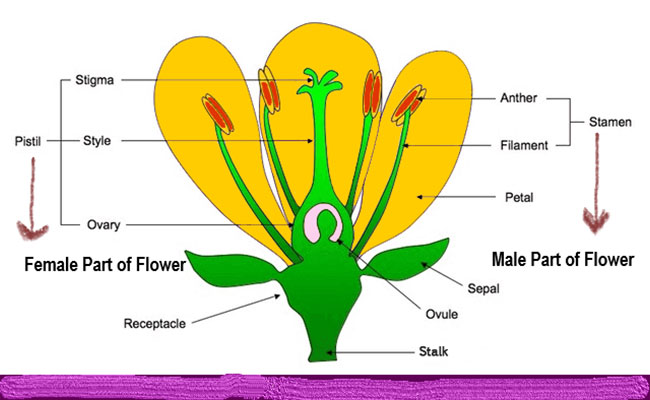Biology midterm review
5.0(1)
5.0(1)
Card Sorting
1/39
Study Analytics
Name | Mastery | Learn | Test | Matching | Spaced |
|---|
No study sessions yet.
40 Terms
1
New cards
ecological organization (small to big)
Atom, molecule, macromolecule, organelle, cell, tissue, organ, organ system, organism, species, population, community, ecosystem, biome, biosphere
2
New cards
three types of ecological pyramids
biomass, energy, number
3
New cards
carbon nutrient cycle
* carbon enters the atmosphere
* carbon is absorbed by autotrophs
* animals consume plants, absorbing carbon
* animals/plants die, decompose, goes back to the atmosphere
* carbon is absorbed by autotrophs
* animals consume plants, absorbing carbon
* animals/plants die, decompose, goes back to the atmosphere
4
New cards
nitrogen nutrient cycle
* nitrogen goes from the atmosphere to soil
* plants absorb nitrogen
* nitrogen is converted by bacteria into nitrites/nitrates
* soil controls the amount of nitrogen in plants and soil
* nitrogen returns to the atmosphere
* plants absorb nitrogen
* nitrogen is converted by bacteria into nitrites/nitrates
* soil controls the amount of nitrogen in plants and soil
* nitrogen returns to the atmosphere
5
New cards
nitrogen fixation
nitrogen is assimilated into organic compounds by bacteria
6
New cards
elements of protein
C, H, N, O, S
7
New cards
elements of nucleic acid
C, H, O, N, P
8
New cards
saturated fat
don’t have double bonds between carbon atoms
9
New cards
unsaturated fat
has double bonds between carbon atoms
10
New cards
enzymes
proteins that are catalysts and produce certain reactions
11
New cards
enzyme process
1. substrate binds to enzyme
2. substrate is converted to products
3. products are released
12
New cards
3 major factors of cell theory
* all living things have cells
* cell is the basic unit of life
* all cells come from other cells
* cell is the basic unit of life
* all cells come from other cells
13
New cards
why are viruses nonliving?
they are not made of cells - all living things are made of cells
14
New cards
3 structures plant cells have that animals don’t
* chloroplasts
* cell wall
* central vacuole
* cell wall
* central vacuole
15
New cards
functions of cell membrane
* protects cell as a barrier
* regulates what goes in/out of the cell
* secretions and absorptions of cell
* regulates what goes in/out of the cell
* secretions and absorptions of cell
16
New cards
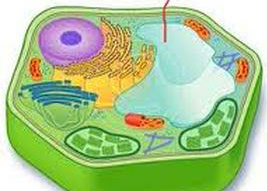
name and define
vacuole - enclosed space within the cytoplasm, usually containing fluid
17
New cards
vesicle
sac formed by membrane filled with liquid that transports things in/out of the cell
18
New cards
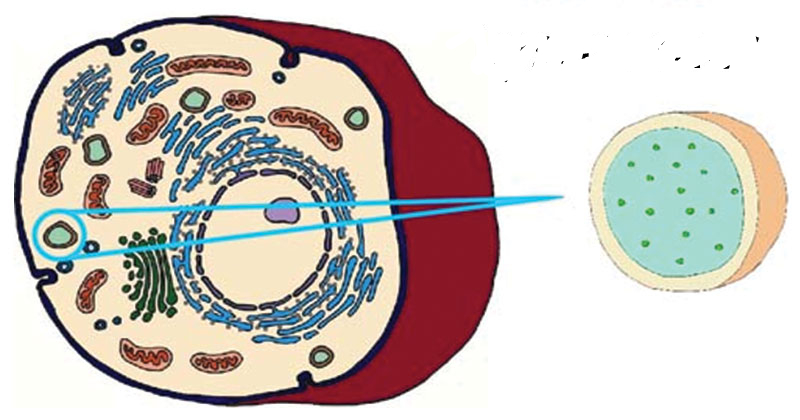
name and define
lysosome - break down/digest things, repair cell membrane, protect against foreign antigens
19
New cards
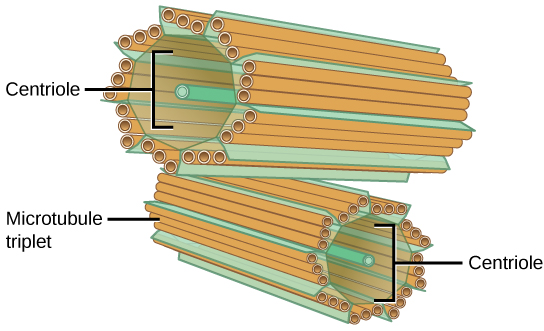
centrioles
organize microtubules
20
New cards
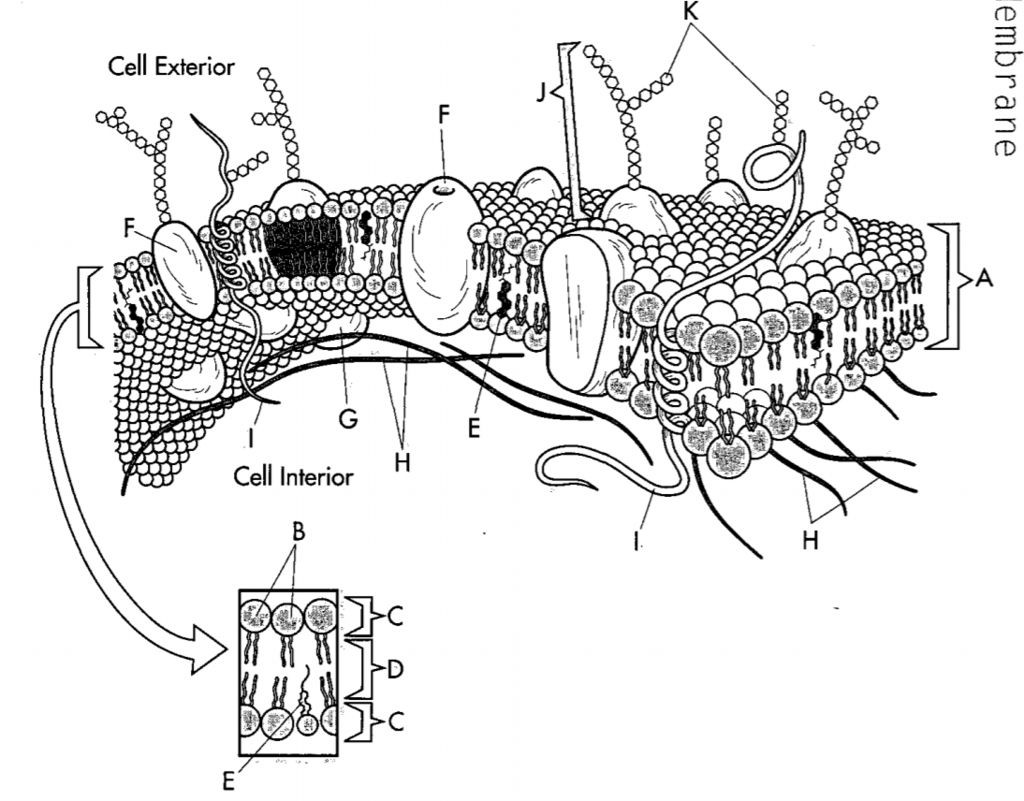
define A
lipid bilayer
21
New cards
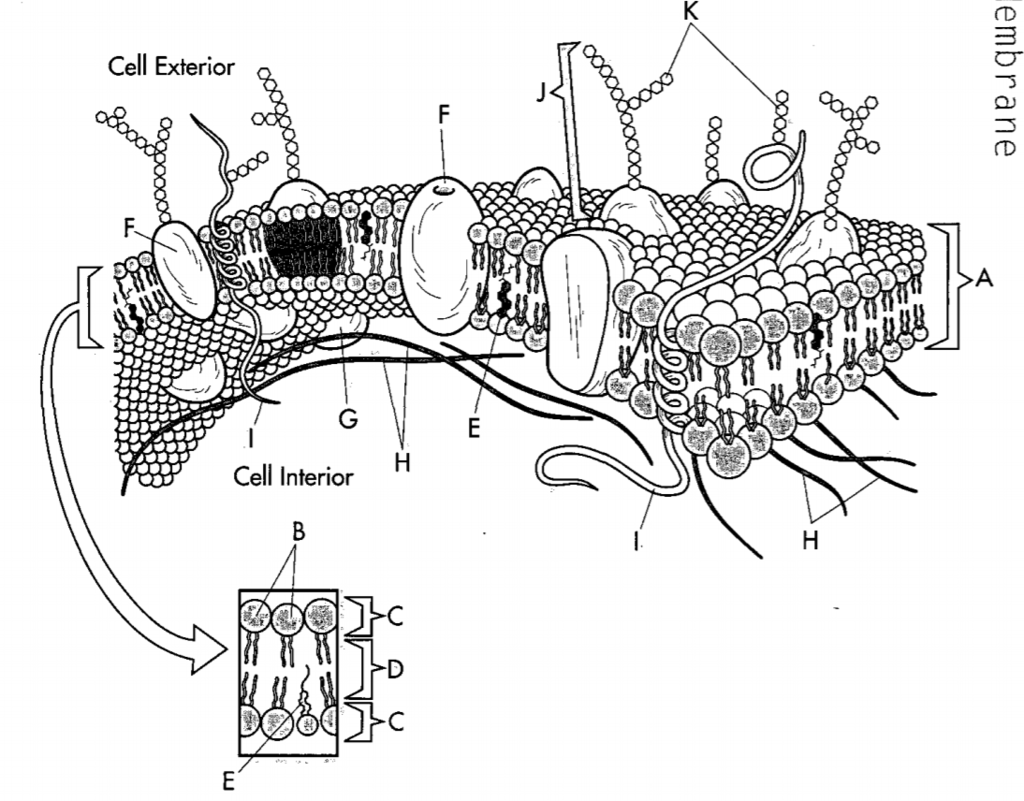
define B
phospholipids - molecule that forms cell membrane. Has a hydrophilic head and two hydrophobic tails
22
New cards
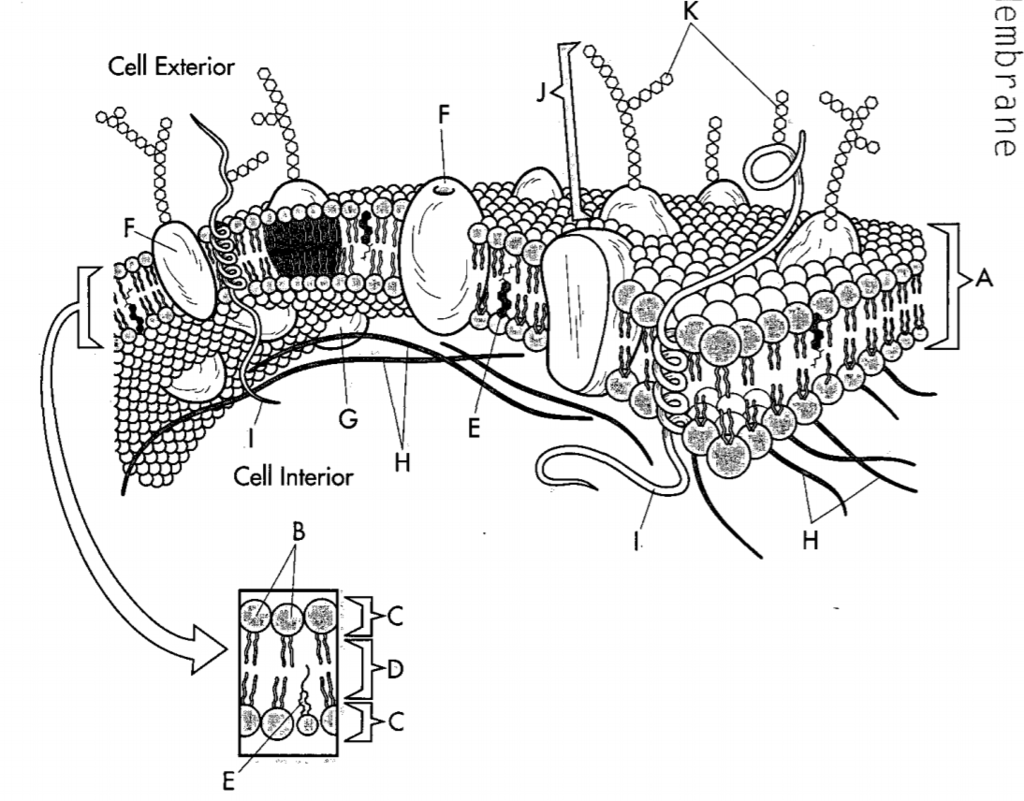
define E
Cholesterol - stabilizes phospholipids when temperatures are too high/low
23
New cards
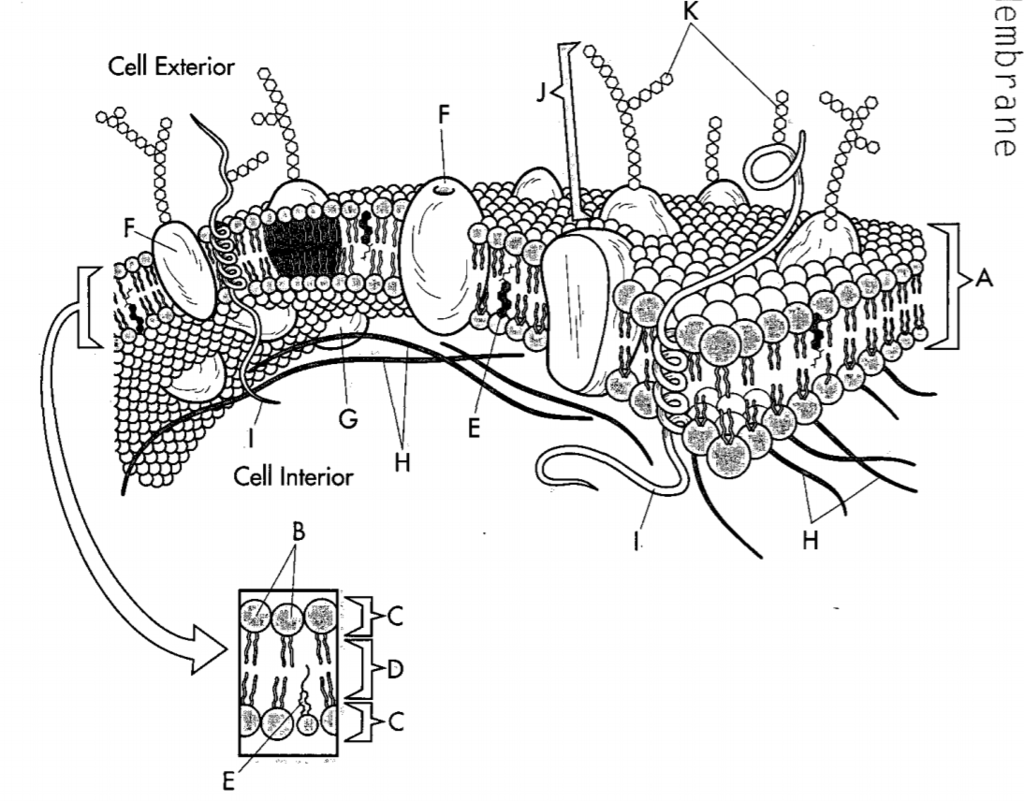
define G
Peripheral protein - a protein loosely bound to the bilayer, not embedded in it
24
New cards
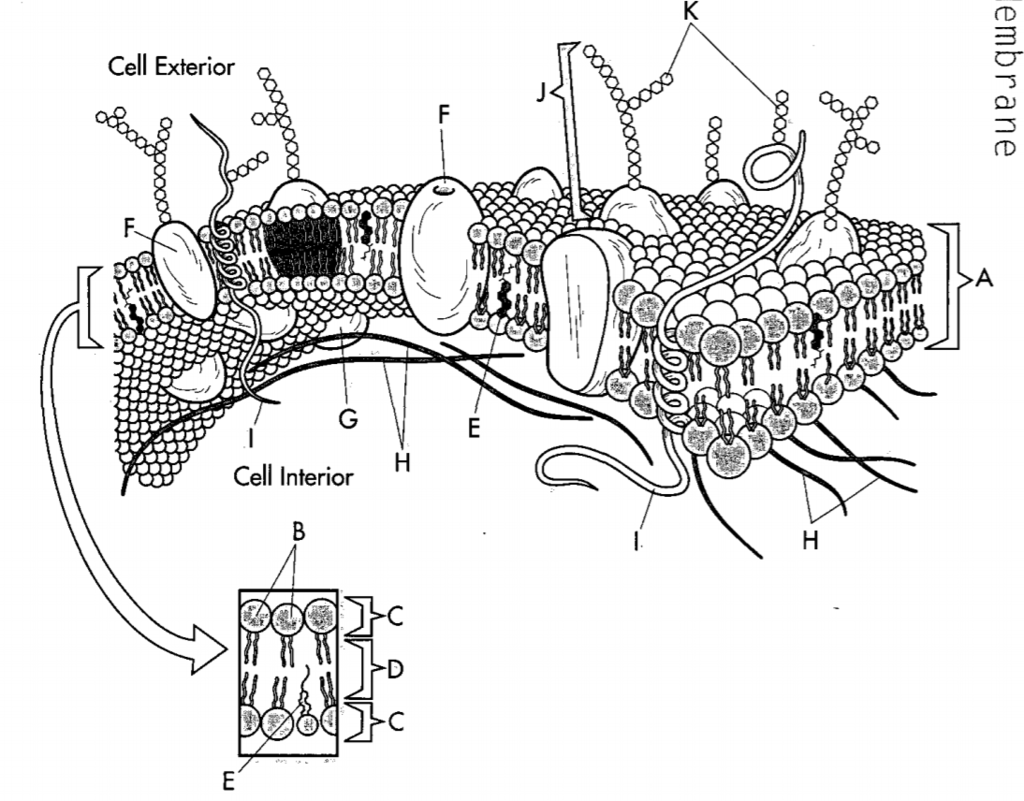
define F
Integral protein - a protein that is permanently attached to the membrane, and extends into the hydrophobic core
25
New cards
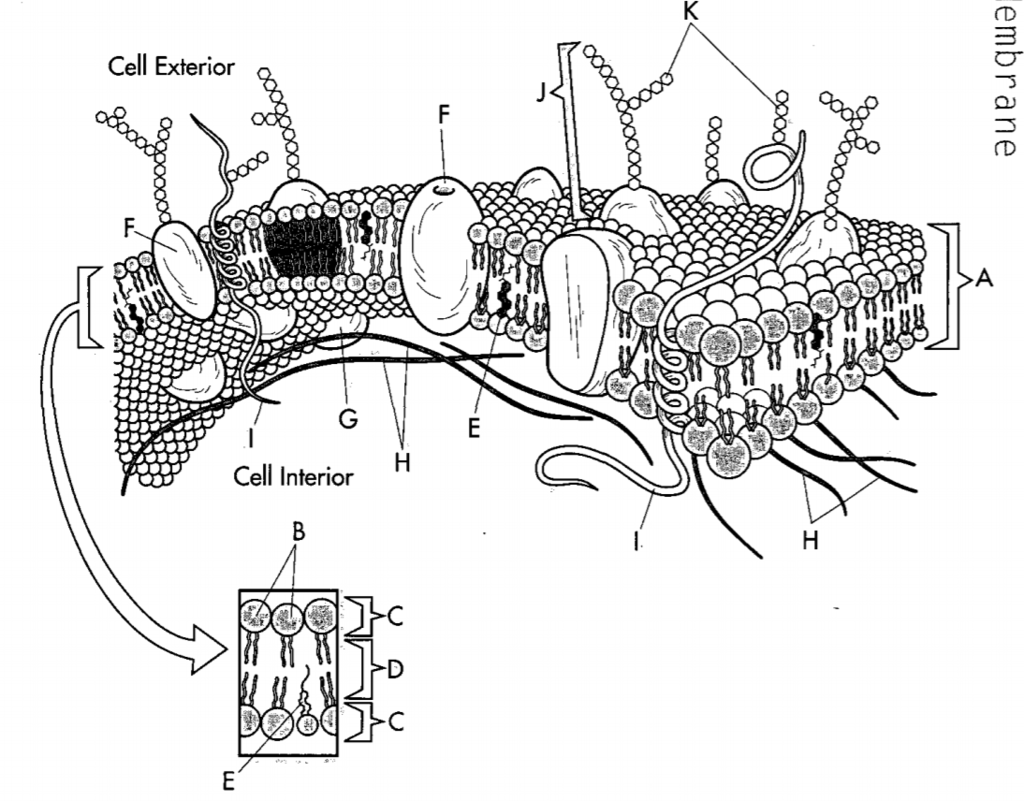
define K
carbohydrates - attached to phospholipid/protein on the surface of the membrane (aids with cell recognition)
26
New cards
exocytosis
when molecules exit the cell in vesicles
27
New cards
endocytosis
when molecules enter the cell in vesicles
28
New cards
cellular respiration equation
6O2 + C6H12O6 = 6Co2 + 6H2O
29
New cards
photosynthesis
6H2O + 6CO2 = C6H12O6 + 6O2
30
New cards
products of light dependant reactions
ATP and NADPH
31
New cards
products of the calvin cycle
inorganic phosphate, ADP, NADP+, and sugars
32
New cards
cellular respiration uses 1 glucose molecule to make ? ATP
36
33
New cards
lytic cycle
a virus using a host cell to make more viruses until the host cell bursts, spreading the virus
34
New cards
lysogenic cycle
a virus’ genome is integrated into a cell’s chromosome and be replicated in the DNA as the cell reproduces
35
New cards
three organs of a plant
* root - carry nutrients up to the plant from soil
* stem - transport nutrients to leaves/plant
* leaves - produce food through photosynthesis
* stem - transport nutrients to leaves/plant
* leaves - produce food through photosynthesis
36
New cards
how do guard cells control the stomata
guard cells use osmotic pressure to open and close stomata to regulate water/solute levels in the plant
37
New cards
what do xylem and phloem transport?
food/minerals/water
38
New cards
what do the root and shoot systems include?
The reproductive system
39
New cards
how do plants reproduce asexually?
* propagating leaves/stems
* roots giving way to new plants
* roots giving way to new plants
40
New cards
which parts of the plant are male or female?
* female - pistil (stigma, style, ovary)
* male - stamen (anther, filament)
* male - stamen (anther, filament)
